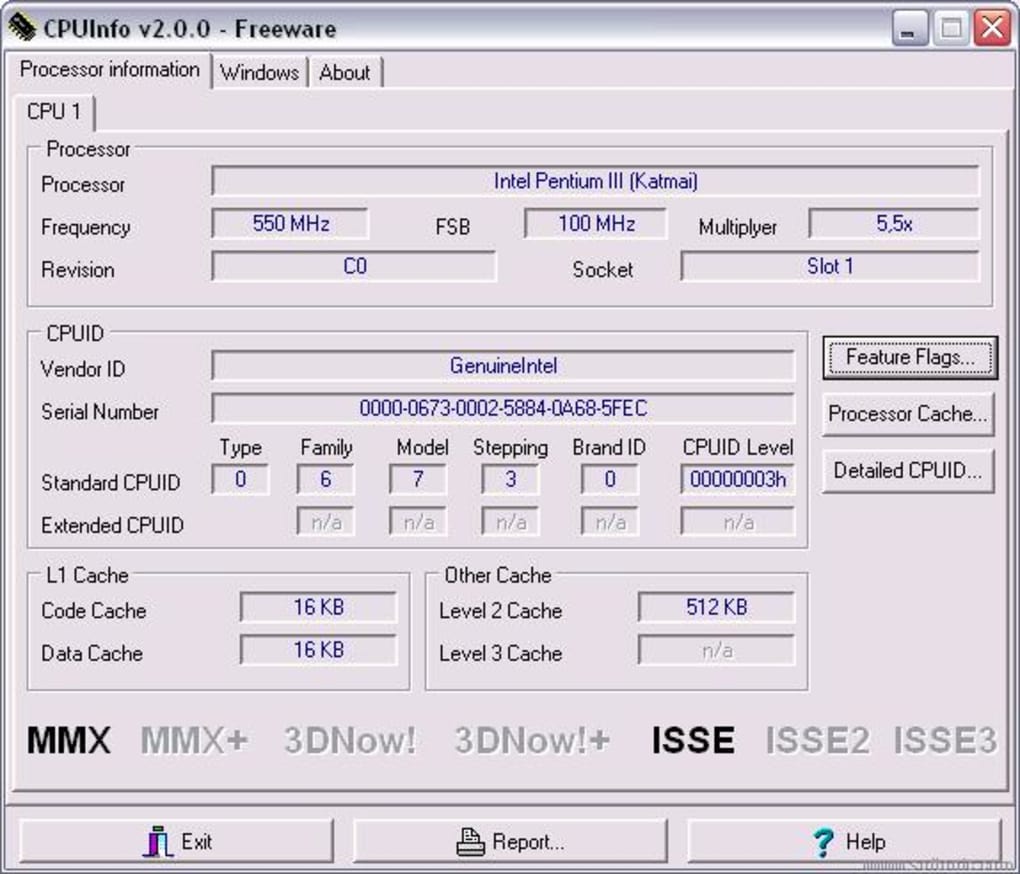

I/O device emulation: Unsupported devices on the guest OS must be emulated by a device emulator that runs in the host OS.Shadow descriptor tables must therefore be used to track changes made to the descriptor tables by the guest OS. The x86 architecture uses hidden state to store segment descriptors in the processor, so once the segment descriptors have been loaded into the processor, the memory from which they have been loaded may be overwritten and there is no way to get the descriptors back from the processor. : 5 : 2 This involves denying the guest OS any access to the actual page table entries by trapping access attempts and emulating them instead in software.
Cpuinfo mac software#
Because most operating systems use paged virtual memory, and granting the guest OS direct access to the MMU would mean loss of control by the virtualization manager, some of the work of the x86 MMU needs to be duplicated in software for the guest OS using a technique known as shadow page tables. A number of key data structures used by a processor need to be shadowed.
Cpuinfo mac code#
: 1 To improve performance, the translated basic blocks need to be cached in a coherent way that detects code patching (used in VxDs for instance), the reuse of pages by the guest OS, or even self-modifying code.

The following discussion focuses only on virtualization of the x86 architecture protected mode.

Cpuinfo mac mac os#
Presence of System Management Controller, indicates the host isĪpple hardware, and thus capable of running Mac OS guest as VM. The list of Peripheral Component Interconnect (PCI) devices Information about the NUMA (non-uniform memory access).

Total amount of physical memory on the host in bytes. Information about each of the physical CPU packages on the host. This feature set is modified by theĪrray in the host capabilities to obtain the feature set supported by Intersection of the feature sets supported by the individual CPU The HardwareInfo data object type describes the hardwareĬPU feature set that is supported by the hardware. Data Object - HostHardwareInfo() Property of HostSystem Extends DynamicData See also HostBIOSInfo, HostCpuIdInfo, HostCpuInfo, HostCpuPackage, HostCpuPowerManagementInfo, HostNumaInfo, HostPciDevice, HostReliableMemoryInfo, HostSystemInfo


 0 kommentar(er)
0 kommentar(er)
